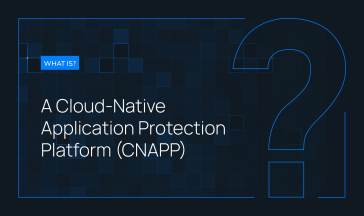- Published on
Cybersecurity in Cloud Computing Challenges and Best Practices
- Authors

- Name
- Adil ABBADI
Introduction
As organizations transition to the cloud for scalability, efficiency, and innovation, cybersecurity remains a paramount concern. Cloud environments introduce new threats, shifting security responsibilities and requiring specialized strategies to protect sensitive data from evolving attacks. In this article, we'll break down the unique cybersecurity challenges of cloud computing, examine top security practices, and provide hands-on recommendations and code snippets to help you safeguard your cloud infrastructure.

- Understanding Cloud Security Challenges
- Best Practices for Securing Cloud Environments
- Automating Security Using Infrastructure as Code
- Conclusion
- Take Your Cloud Security to the Next Level
Understanding Cloud Security Challenges
Cloud computing environments change the traditional security model, often blurring the lines of responsibility between the provider and the user. Here are some core challenges:
- Shared Responsibility: Cloud services operate on a shared responsibility model, meaning both the provider and customer play roles in securing assets.
- Data Breaches: Misconfigured storage, lack of encryption, or insecure APIs can result in exposure of sensitive data.
- Complex Access Management: Ensuring the right people have the right level of access, especially across multiple accounts and services, is challenging.
# Example: Using AWS Boto3 to list open S3 buckets (potential data leak risk)
import boto3
s3 = boto3.client('s3')
for bucket in s3.list_buckets()['Buckets']:
acl = s3.get_bucket_acl(Bucket=bucket['Name'])
for grant in acl['Grants']:
if 'AllUsers' in grant['Grantee'].get('URI', ''):
print(f"Bucket {bucket['Name']} is publicly accessible!")
Best Practices for Securing Cloud Environments
Adopting a defense-in-depth approach is critical for robust cloud security. Here are fundamental practices:
- Encrypt Data At Rest and In Transit: Always encrypt sensitive information, whether it's stored or transmitted.
- Implement Strong IAM (Identity and Access Management): Use least-privilege principles and multi-factor authentication (MFA).
- Continuous Monitoring: Using built-in or third-party tools for real-time threat detection and incident response.

# Example: Enabling encryption on a Google Cloud Storage Bucket
gsutil encryption -k projects/YOUR_PROJECT_ID/locations/global/keyRings/YOUR_KEYRING/cryptoKeys/YOUR_KEY gs://YOUR_BUCKET/
Automating Security Using Infrastructure as Code
Automation ensures consistency and speed in applying security controls across cloud environments. Infrastructure as Code (IaC) tools like Terraform and AWS CloudFormation can help enforce security policies and minimize manual errors.
- Security as Code: Embed best practices directly into IaC templates.
- Policy Enforcement: Use automated security scanning tools to catch misconfigurations before deployment.

# Example: Terraform policy to enforce encryption on AWS S3 Buckets
resource "aws_s3_bucket" "secure_bucket" {
bucket = "my-secure-bucket"
server_side_encryption_configuration {
rule {
apply_server_side_encryption_by_default {
sse_algorithm = "AES256"
}
}
}
}
Conclusion
Securing cloud environments demands a proactive and layered approach, combining strong access controls, encryption, continuous monitoring, and automation. As cloud services evolve, so do the threats—so it's critical to adapt, stay informed, and adopt industry best practices.
Take Your Cloud Security to the Next Level
Want to dive deeper? Review your cloud provider's security documentation, experiment with IaC security enforcement, and keep learning. The cloud is powerful—make sure it's protected!
